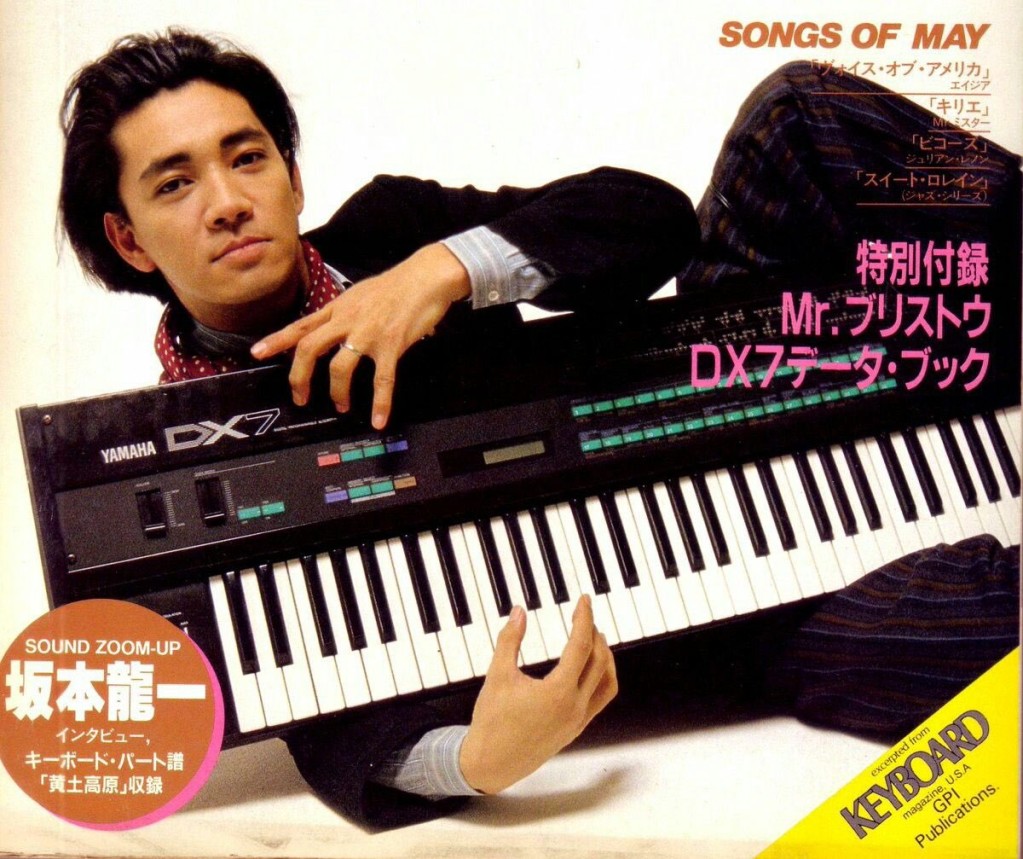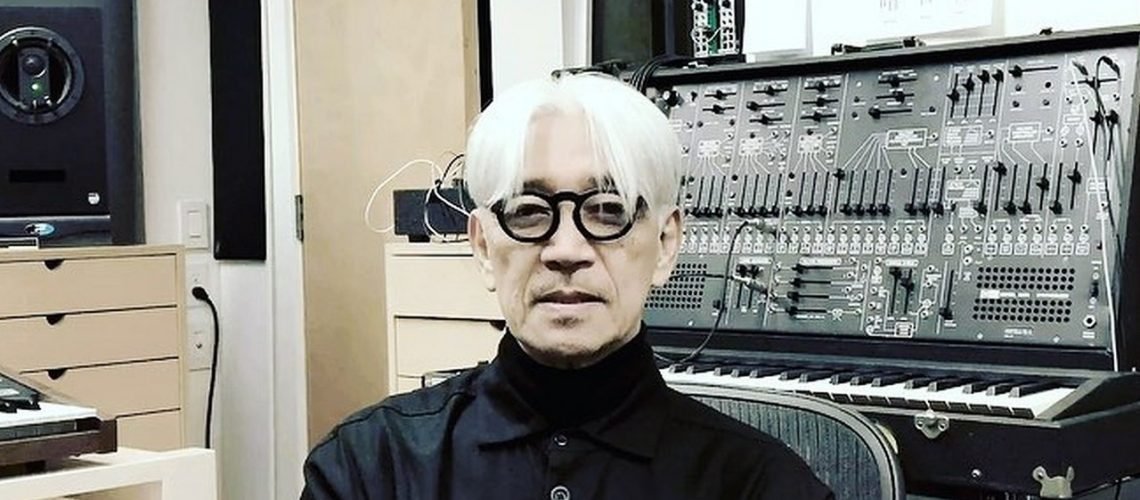From music to technology, fashion to performance, few artists can reveal a future to so many people as Ryuichi Sakamoto did in his work. The world he touched learned of his death today.
David Abravanel had already begun work on works to revisit. And David brings us a snapshot in time when the composer worked with an influential new approach to sampling, via a new machine.
I think even amidst all these photos today, my favorite is this one at top. The text it seems comes from our US Keyboard Magazine. (I recall for a time the magazine was translated into Japanese.) Thanks to Sharooz Raoofi for this.

The official statement from commmons:
Here’s the English text:
An Announcement
We are deeply saddened to announce the passing of artist and musician, Ryuichi Sakamoto, on the 28th of March, 2023. He was 71 years old.
While undergoing treatment for cancer discovered in June 2020, Sakamoto continued to create works in his home studio whenever his health would allow.
He lived with music until the very end.
We would like to express our deepest gratitude to his fans and all those who have supported his activities, as well as the medical professionals in Japan and the U.S. who did everything in their power to cure him.
In accordance with Sakamoto’s strong wishes, the funeral service was held among his close family members. Please understand that we are unable to accept any calls of condolences, offerings of incense or flowers, and the like.
Finally, we would like to share one of Sakamoto’s favorite quotes:
“Ars longa, vita brevis.”
Art is long, life is short.
While many will share in this loss, we ask that you respect the family’s privacy during their time of grief.
April 2nd, 2023
Kab inc.
Avex entertainment inc.
commmons
Ryuichi Sakamoto, 1952 – 2023
Ryuichi Sakamoto was the rare musician who could consistently look into the future, past, and present with his music – whether it was glitch sound art and pioneering sampling, delicate versions of Bach and Debussy, or his many film soundtracks.
Underrated music to revisit
Focusing on some of the underrated/overlooked albums in Sakamoto’s substantial oeuvre, I recommend anyone to checking out the following:
Willits + Sakamoto – Ocean Fire (2008)
One of Sakamoto’s two collaborate albums with kindred spirit Christopher Willits, beautiful ambient textures of processed guitar and piano.
Love Is the Devil (1998)
Soundtrack to the brilliant film of same name about Francis Bacon. Dissonant piano pieces and oddly-comforting electronic shuffles fit this darkly comic and disturbing look at Bacon’s distinct work and his relationships with friends and lovers.
Chasm (2004)
Not so much overlooked as it was promoted heavily upon its release, but amidst much of his work, it’s good to remember how playful Sakamoto could be. Here he embraces hip-hop and electronic styles in novel ways, even while covering some of his favorite serious topics (war, environmentalism).
Logic Murata Drum
While working on their fifth album, 1981’s Technodelic, Yellow Magic Orchestra procured a prototype of the LMD-649, a pioneering sampler. Built by Toshiba-EMI designer Kenji Murata, the “Logic Murata Drum” played the same core technological role on Technodelic as the TR-808 had played on the preceding album, BGM.
Featuring 12-bit sampling (a step up from the 8-bit sampling capabilities of the Fairlight CMI, which had been released in 1979 but with which Murata was apparently unfamiliar while developing the LMD-649), the machine – alongside the influence of industrial music – facilitated YMO’s turn from ironic camp and disco/pop influence towards a sound that was at points harder and more contemplative. “Seoul Music” and its cutting syllabic percussion, “Epilogue” and its factory recordings from collaborator Yoshifumi Iio, and the short fricatives that loop throughout the tenderly gorgeous “Light in Darkness”, exemplify YMO’s use of this pioneering technology.
It’s worth noting that Technodelic was far enough ahead of its time to be YMO’s worst-selling album (originally there was not even an American release), yet it stands as perhaps their most influential work from a technological standpoint – and is a classic that is well worth seeking out.
More:
YMO – “Seoul Music”
Ryuichi Sakamoto – “Bathroom” from Love is the Devil
Willits + Sakamoto – “Toward Water”
Sakamoto liver performance of “War and Peace” from Chasm
And for the influence of this approach to sampling, see
Depeche Mode – “Everything Counts” / Boards of Canada – “Telephasic Workshop“
Remembrances
Dearest @ryuichisakamoto … how can one summarise your gentle profundity? Thank you for the warmth and generosity, and for the wellspring of your music which lives so very deeply inside so many of us. With deep love and respect…RIP. pic.twitter.com/2OxnXdAWCz
— lawrence english (@room40speaks) April 2, 2023
very few people ever expand the territory of their artform in their lifetime, Sakamoto was one. He built a space for the human in the machine, a space for stillness and reflection in the loudest corners of the mainstream, and something eternal in the disposability of pop. RIP https://t.co/4NgA0ShVQ6
— ཊལབསརངཧ (@David_Rudnick) April 2, 2023
Thank you for the great inspiration you have been, thank you for never having bowed to the “no-politics” stance of Japan’s musical industry, and lastly thank you for the support you gave us and many other local artists.
Rest in peace, dear Ryuichi Sakamoto.
— MIRA新伝統 (@MIRAperformance) April 2, 2023
This one hits hard and hurts a lot.
I’ll never forget how kind he was when we played together almost 20 years ago, and how honored I still am that he was one of the first to reinterpret our music. His music will always remain a major influence on me. Rest in Peace. https://t.co/oJJQnf5BGg
— Telefon Tel Aviv (@telefontelaviv) April 2, 2023
And this year we got still new music:




